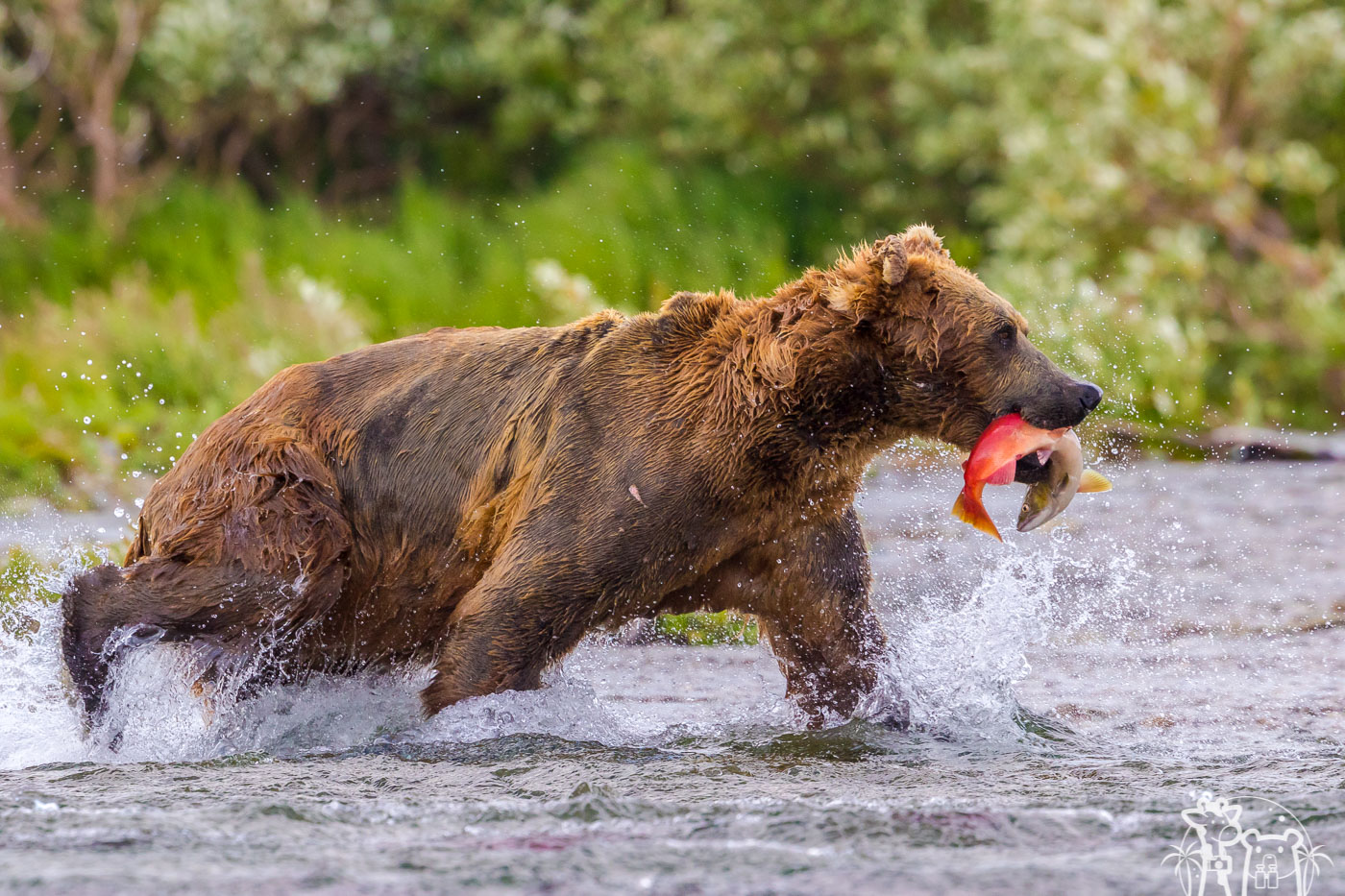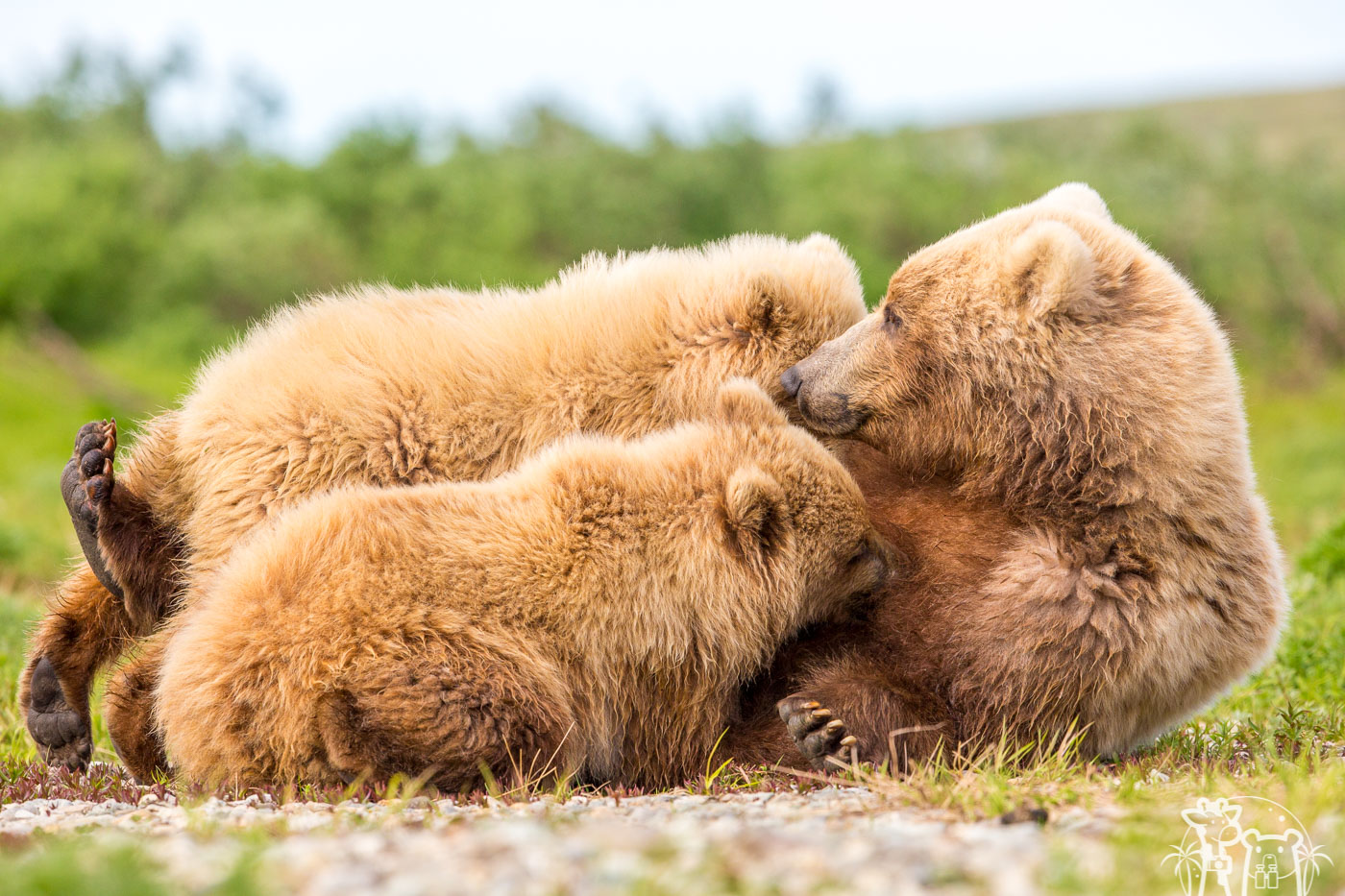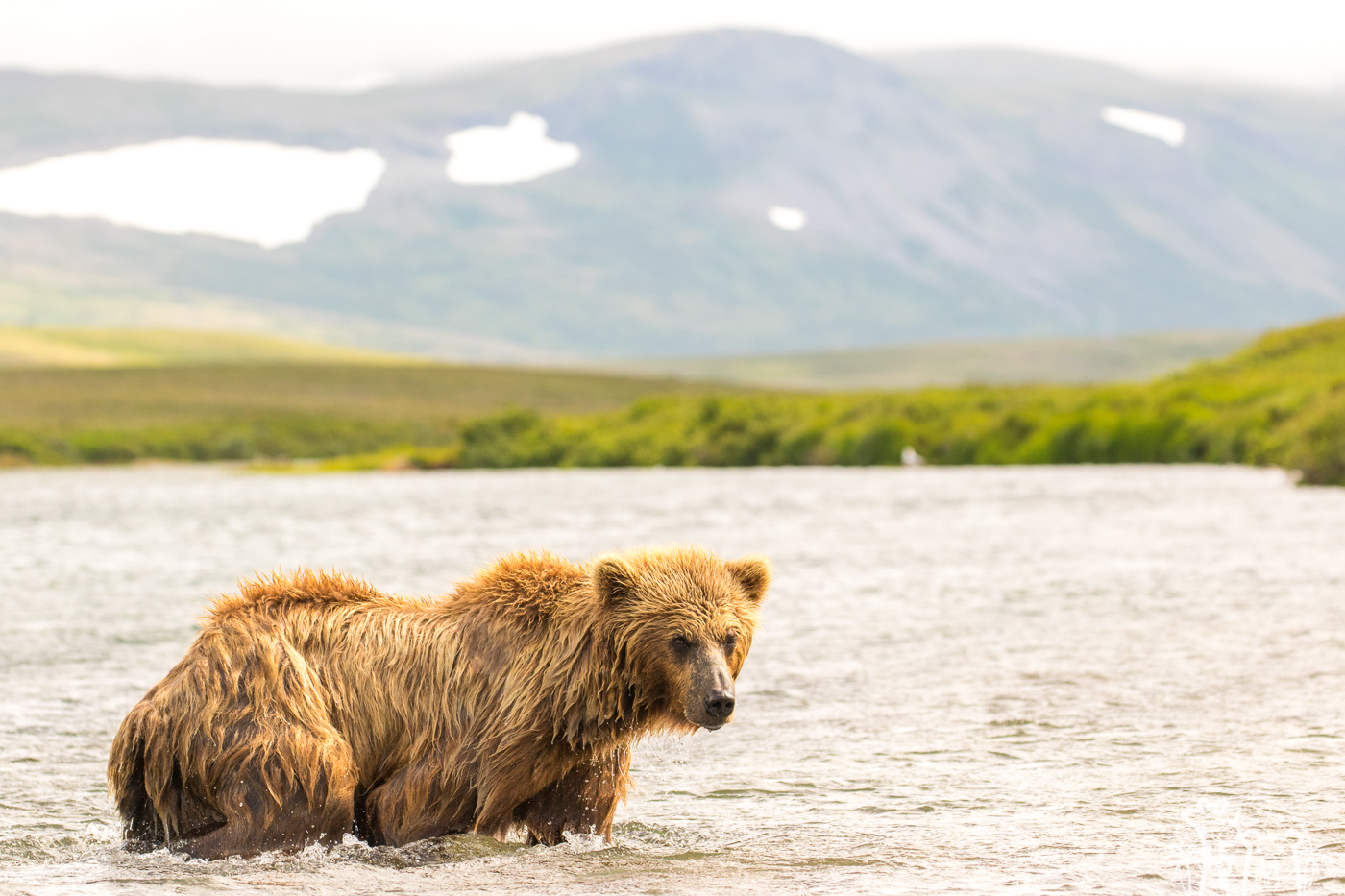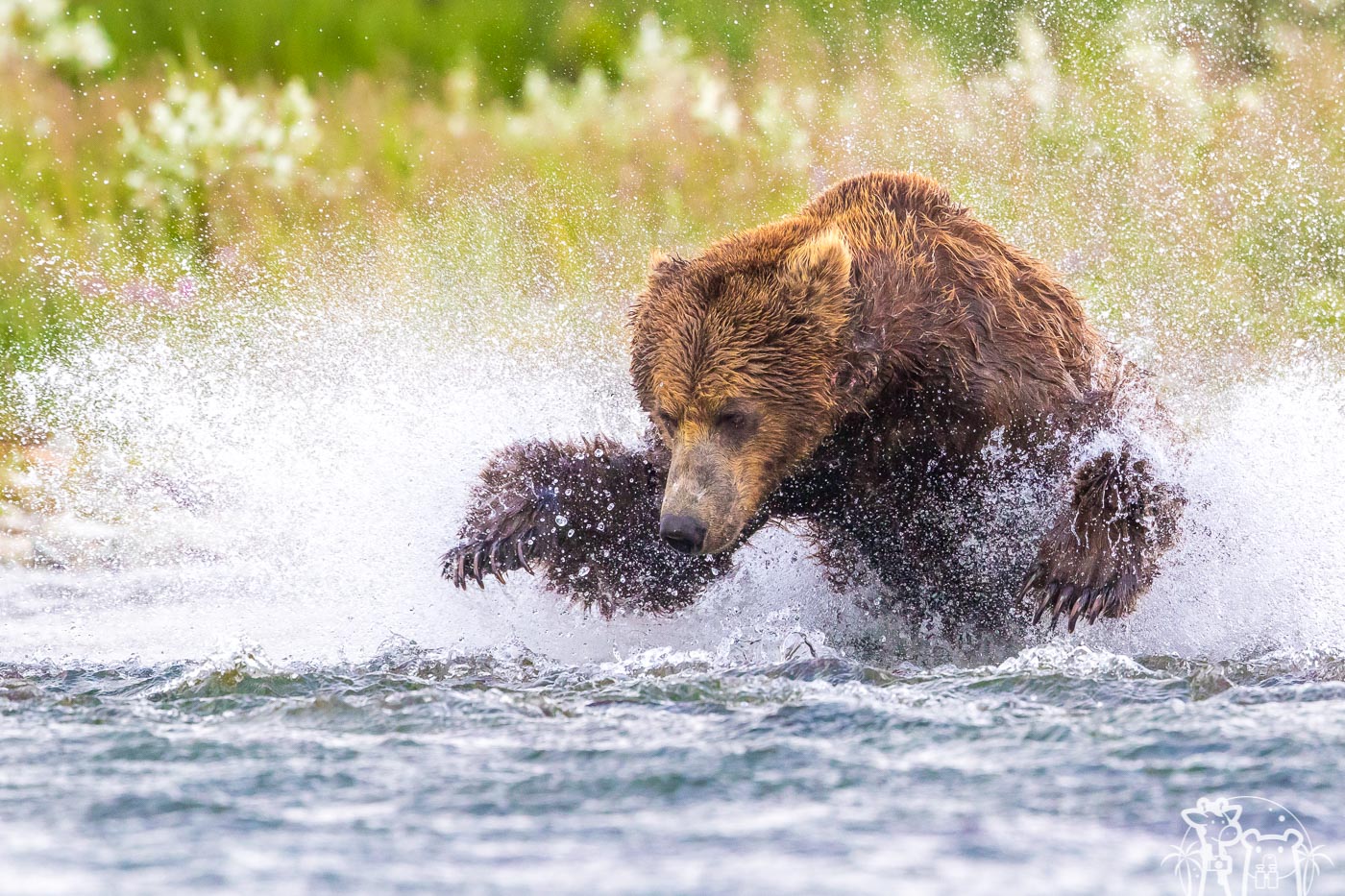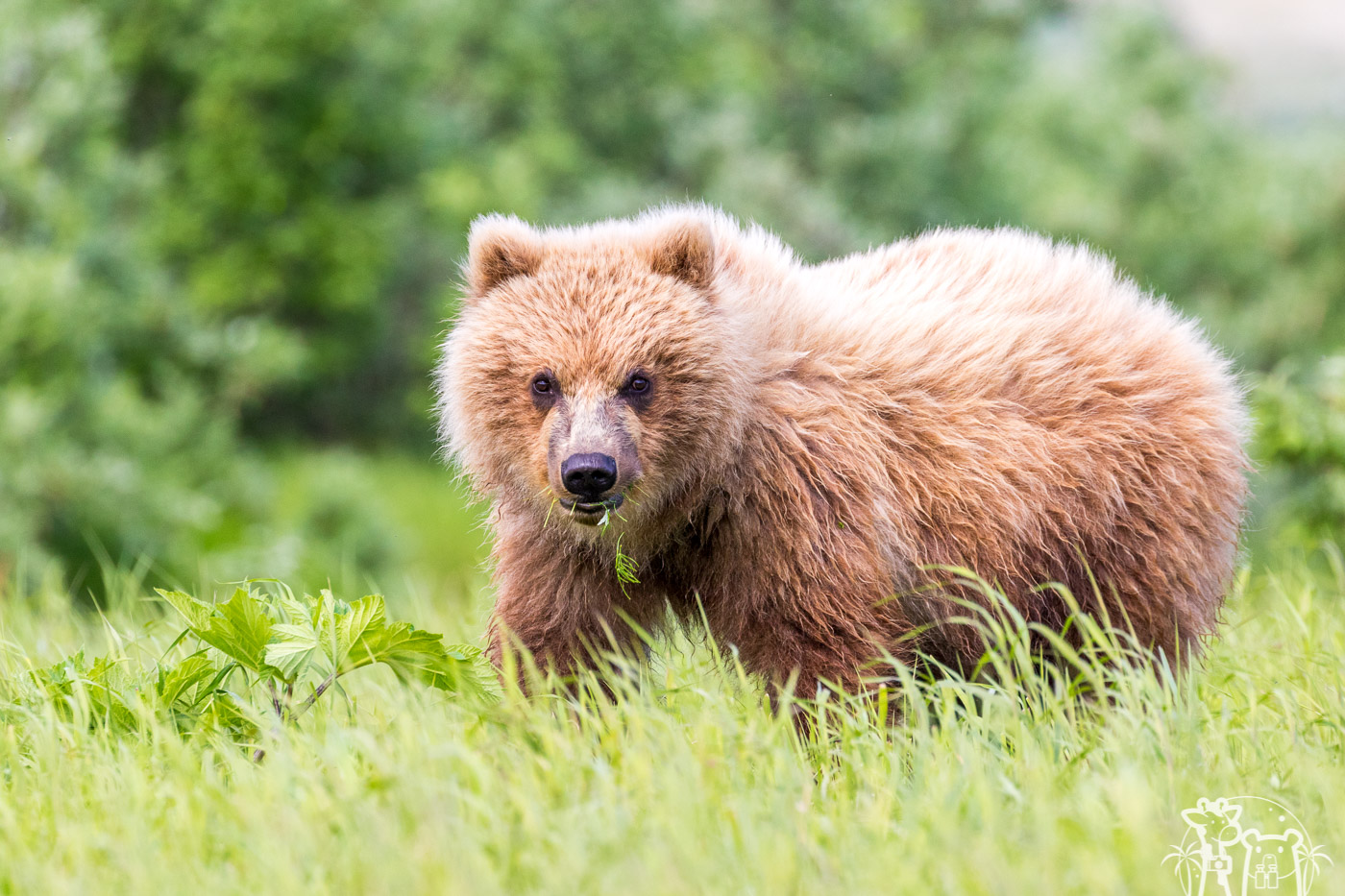Who are brown bears ?
Scientific name
Ursus arctos
Height
1.50 – 3.50 m
standing up
Weight
80-700 kg
60-350 kg
Offspring
Cub
Diet
Omnivorous
(Salmon, berries, grass,…)
Life span
30 years
Brown bear or grizzly ?
Why not the two of them ! The name brown bear is for the entire species throughout the world. Even those found in our country, France ! In North America, grizzlies are a subspecies of brown bears. They are those living inland. The others, living on the coast are ‘mere’ brown bears despite them being bigger !

Brown bears do not hibernate, they just really slow down ! In other words, they’re not sleeping all winter long. Even though their heart rate slows down, they can wake up in case of danger. Females even give birth in their den during winter.
Mid October is the time when females with cubs go and find some place to spend winter. Then, it’s lone females turn followed by young males and finally mature males mid November. They all will start to get out of their shelter during the month of April.
Human beings are neither a predator nor a prey for brown bears. Unless you surprise them during a walk for instance, they will more likely flee than attack. Those who are really feared by the moms and their cubs are big males ! They won’t hesitate to kill the young bears in order to stop the female reproductive cycle and make them fertile again.
One out of two newborn bears dies in its first year and an adult male is the cause of death 80% of the time.
This is how much fat a bear stacks up for the winter.

The trick with brown bears is not mistaking them for their cousin : black bears. If we strictly follow their names, we would be tempted to identify them according to their colors. But a brown bear color can range from light blond to dark brown. Colors which can be very close to those of black bears (which are not exclusively black).
If you want to identify a brown bear, you shall look at the big hump on their back ! When you see a bear up in a tree, you’re certainly watching a black bear. Brown bears are way too big to climb trees when they’re adults. But they still have some skills : they’re very good at swimming, and even better at fishing !
Unlike the popular belief, brown bears are essentially vegetarians : grass, berries, roots, mushrooms and other plants make up 80% of their diet ! But they need to stack enough fat up to hold throughout winter. That’s the reason why they are also eating mammals and even sometimes carcasses.
That’s in this situation that coastal bears have a huge advantage over grizzlies. July and August are months during which salmons run up the river to reproduce at the exact place where they were born ! Nature is incredible, isn’t it ? Obviously, brown bears feast on fish and since this source of food is extremely nutritive, they are generally bigger than the ones living inland.

Some agile bears with quite a bit of experience simply sit by the river, patiently waiting for the right time to catch their target. Younger bears run like headless chickens causing mayhem under water. Among confused salmons, there is often some which are then easy to catch !

With such an abundance of food, usually solitary brown bears tolerate each other. There will be enough food for everyone. Even for seagulls ! As soon as a salmon is caught, a flock of birds forms around the bear. Everything is allowed in order to steal some part of the feast !

Where to see brown bears ?
This is an interactive map, don’t hesitate to mouse over it.
Countries where there are brown bears in the wild
Countries where we have already observed brown bears in the wild
How to observe brown bears ?
It’s not that easy to observe brown bears. You obviously stand a good chance of seeing one by going to a national park like Denali in Alaska. You might even get to see it very close. But you might also have to observe it from a distance, or from a very big distance. Which can be frustrating.
Our tip : If, like us, you’re looking for a special encounter, you will have to go onto a brown bear excursion ! Unfortunately, this is exepensive because you will need to go to well preserved remote areas, which are only accessible with float planes.
Those excursions can either be for one day or for several. For the latter, you will have to either sleep in remote hotels (that will have you pay for their unique locations) or camp in the tundra (better with a guide when you look at the logistics it implies) and have the incredible feeling of being alone in this world !


That’s the way we went camping for an entire week in Katmai national park in Alaska. We were staying by a lake, kilometers away from any settlement but with an amazing guide ! We really disconnected from the rest of the world. everyday we would go to the river to watch bears fishing salmon and take pictures of them. This is an incredible moment of our lives and we will soon share it with you in a dedicated article.

Are brown bears in danger ?
Estimation of the number of brown bear individuals living in the wild :

Brown bears are currently classified as a Least concern species. They used to be common in very vast regions covering places like Maghreb, the Middle East, the entire Europe and even North America up to Mexico, the number of brown bears has decreased a lot over the centuries. Today, they are mainly found in Russia, United States of America and Canada. Remaining populations of Europe and Asia are small isolated groups.
What are the causes ?
Unfortunately and like many wild animals, brown bears are suffering from human development which causes habitat loss in favor of cities, highways or activities like agriculture. Another human impact is car cashes (and even train crashes sometimes…).
With our urban areas growing indefinitely, brown bears are attracted by the huge quantity of food available nearby. But since they’re big and powerful, they are seen as a threat and are therefore killed by humans. There currently is a huge controversy in France reading the brown bear in the Pyrenees mountains. Under threat of extinction in this regions, two females from Slovenia have been recently reintroduced but shepherds don’t like that…
And when it’s not about defending themsleves or their cattle, human beings kill bears for their hunting “pleasure” or for money. Many bears have been victims of poaching for their paws but also for their bile which is used in traditional Chinese medicine. There are lots of farms in China and Vietnam : the number of bear individuals in these places is more than 10,000 ! Animals must be kept alive so that bile can be taken everyday. No need to say they live in terrible conditions in very small cages…


